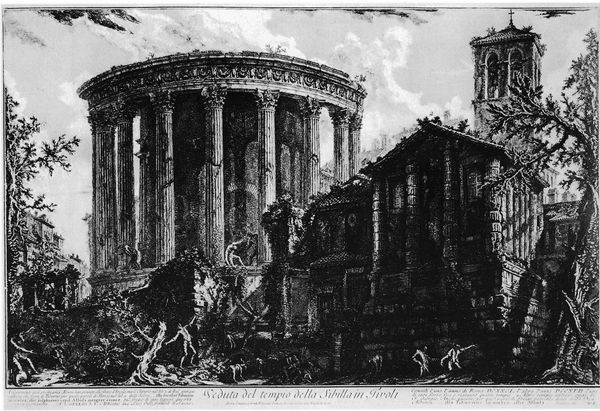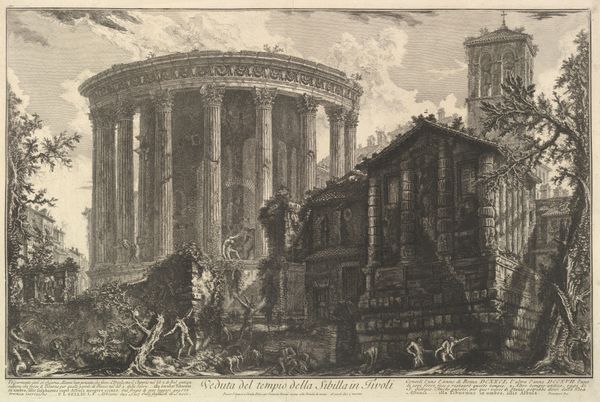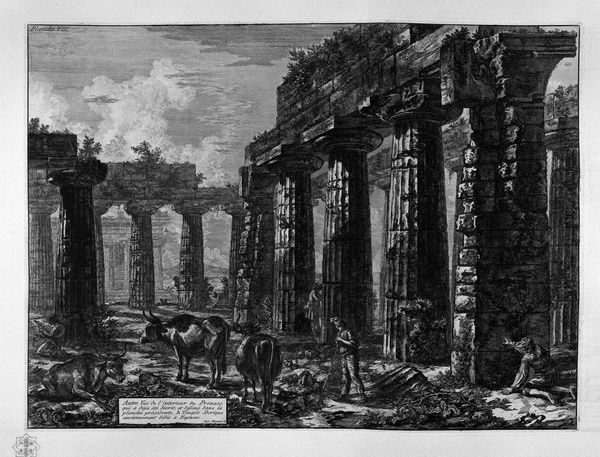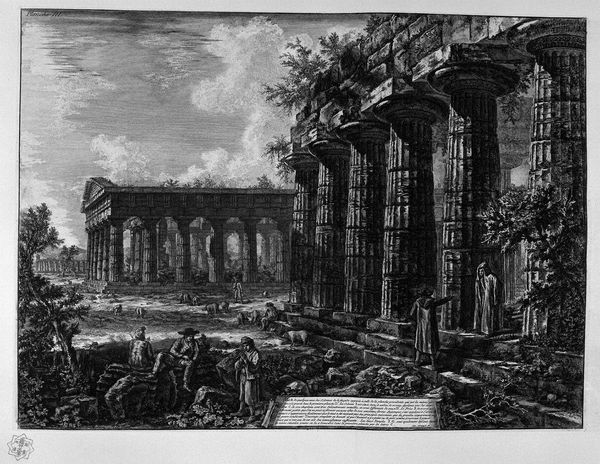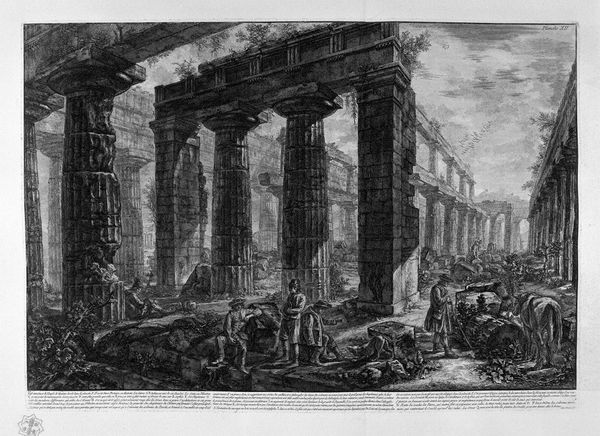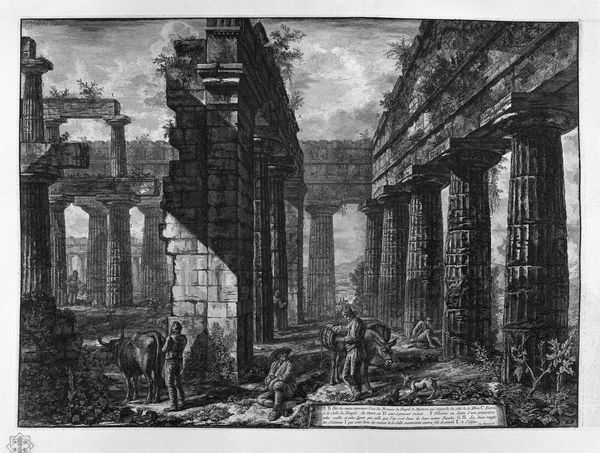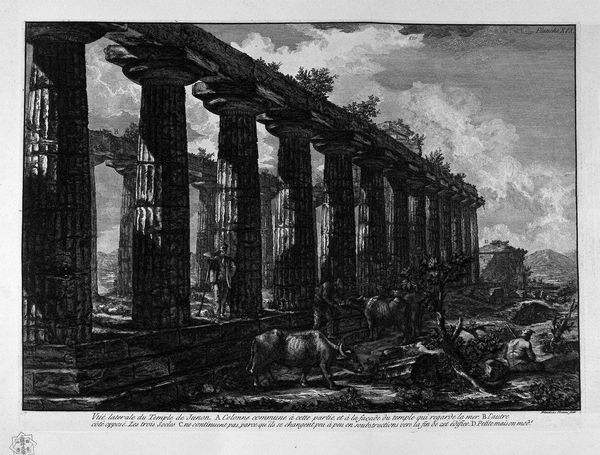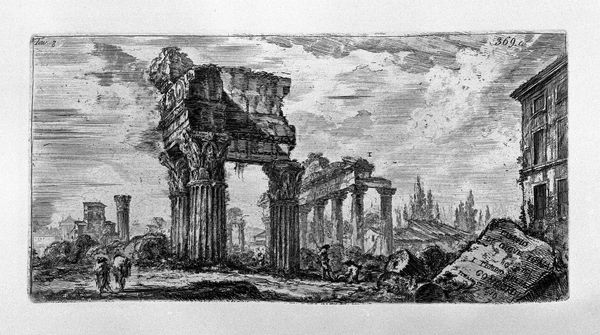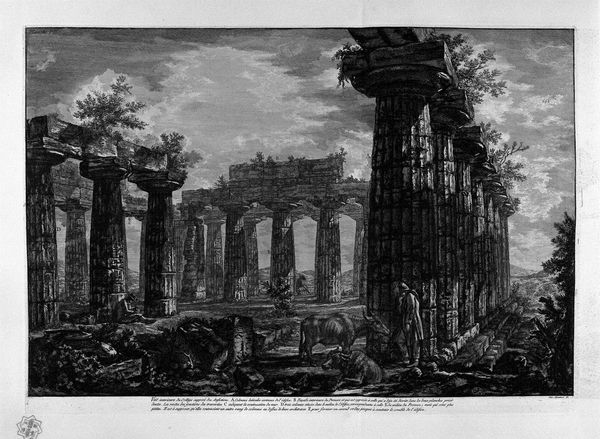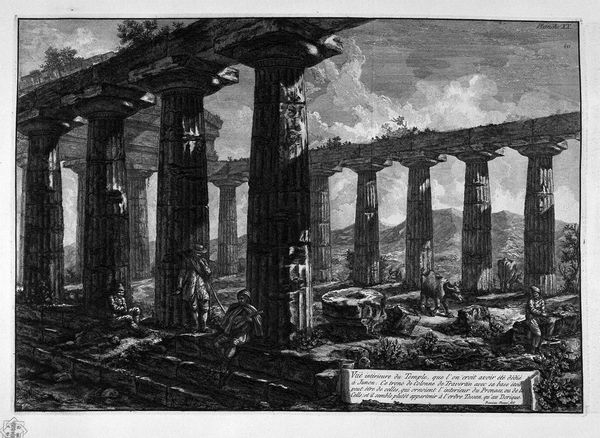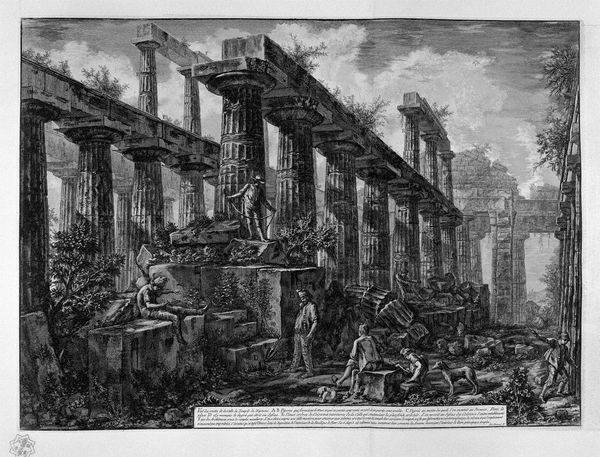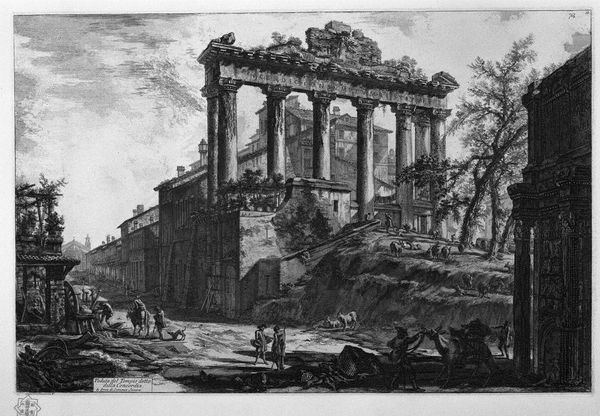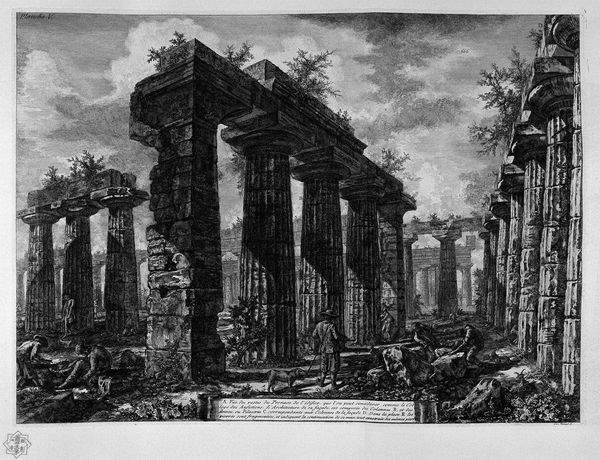
print, etching, engraving, architecture
#
baroque
# print
#
etching
#
landscape
#
arch
#
engraving
#
architecture
Copyright: Public domain
Curator: This print before us is Giovanni Battista Piranesi’s “View of the Temple of the Sibyl at Tivoli.” What’s your first take on this image? Editor: I feel overwhelmed! It’s grand and imposing, but there’s this sense of melancholy, almost like witnessing the slow decay of greatness. The light, dark contrasts contribute to it greatly. Curator: Absolutely. Piranesi was a master of dramatic contrast. Think of this not just as a record of a specific building but as an exercise in evoking certain feelings regarding history and Rome’s place within it. Consider how Piranesi chooses to depict these monuments: crumbling, overgrown, with figures that emphasize the scale. Editor: And there are all these tiny human figures that highlight, by contrast, the temple's magnificence and perhaps also underscore their transience, the temporary nature of human presence compared to the supposed permanence of architecture and the nature that reclaims it all in the end. Curator: Precisely! These weren’t meant as exact architectural drawings. It’s the ‘idea’ of Roman grandeur that matters. Also, this wasn’t only art for art’s sake, but for public consumption as prints found their way into the portfolios of Grand Tourists wanting a tangible souvenir of their journey to the classical world. Editor: I find myself getting a little lost in the detail. There is almost too much. I wonder if the picturesque overpowers the actual architecture. But maybe that's the point? Curator: Maybe! This work anticipates so much: our modern obsession with ruins, our simultaneous romanticising and critiquing of power. Even the rise of visual culture and how prints disseminate certain views globally. It captures a potent tension between reality and representation, between past and present. Editor: Well, looking at it now I do not feel so overwhelmed, the ruins are no longer about just what is left but about the march of time and everything in its wake. It’s hauntingly beautiful. Curator: Agreed. I keep coming back to the shadows that envelop the scene, a tangible reminder of time’s passage.
Comments
No comments
Be the first to comment and join the conversation on the ultimate creative platform.
